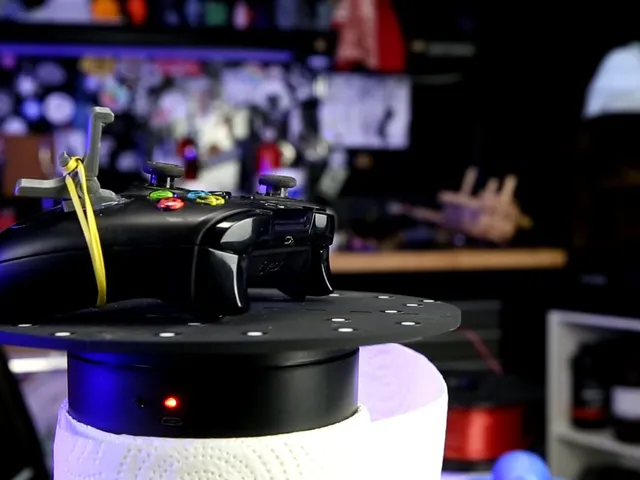Module 3: Screen Media Cultures
3.3 Cripping the Future

Cripping
Crip theory, like disability studies, calls on us to critically examine normative ideas about disability. It does this, however, from a particular position: crip theory refuses to view normativity as, itself, a desirable thing that disabled people should assimilate into. In this module, we will be looking at depictions of the future where discrimination is eliminated through the elimination of difference. Crip theory protects us, ideologically, from this imagined future. It does so by inviting us to view reality in different ways—specifically, in ways that are aligned with embodied experiences of disability. So, instead of relieving the future of discrimination by removing disability from the future, Crip theory crips the future itself, to make it a place—firstly in thought, and then in practise—where disability can flourish (Kafer, 2013, pp. 26-27).
Crip theory, as demonstrated by its name, involves a re-appropriation of the term “Crip”. Robert McRuer (2019) writes on the use of Crip as both noun and verb:
“As a noun or adjective, ‘crip’ is of course a flamboyant reclamation, one that disabled activists, artists, and theorists have long used to signify solidarity and resistance…As a verb: ‘To crip’, like ‘to queer’, gets at processes that unsettle, or processes that make strange or twisted.”
(p. 134)
Anything can be . Later on in this module, we will ask you to crip science fiction. To prepare for this cripping-to-come, we will look at some other ways that the future has been cripped by scholars in the field.
Cripping Time
Time has been thought about in many different ways by many different scholars working in disability studies and crip theory. In the following video (IRTG Diversity, 2021), starting at 4:30 and ending at 6:15, Robert McRuer describes how Crip time is thought of in disability communities and by different scholars:
Drawing on the work of prior disability studies scholars, Alison Kafer (2013) asks us to consider what it would mean to re-examine the future and the progression of time from the perspective of disability. Kafer brings up one of the common usages of ‘crip time’, especially in disabled communities: “Recognizing some people’s need for “more” time is probably the manifestation of crip time most familiar to those of us in the academy”. “But,” Kafer continues, “‘crip time’ means more than this kind of blanket extension; it is, rather, a reorientation to time” (pp. 26 – 27). What’s involved in this reorientation?
Time has a very close relationship to how disability has been, and is, thought about. The medical model of disability frequently generates timelines that identify when a disability was acquired and how long it will take to be treated or cured. This particular relation of time to disability, Kafer (2013) writes, is embedded in a series of questions commonly posed to disabled people,
“Were you born that way? How much longer do you have to live this way? How long before they invent a cure? How long will a cure take? How soon before you recover?”
(p. 28)
Alison Kafer assigns the term “curative time” to these hypothetical or real ‘dates’ — the date when one’s ability was lost, the date when one can expect to recover — that are embedded in these questions and the ‘medical’ perspective more generally. Kafer’s careful construction of ‘curative time’ chooses the term ‘curative’ rather than ‘cure’ so as to not stigmatize the desire for cure:
“I use “curative” rather than “cure” to make clear that I am concerned here with compulsory able-bodiedness/able-mindedness, not with individual sick and disabled people’s relationships to particular medical interventions; a desire for a cure is not necessarily an anti-crip or anti-disability position. I am speaking here about a curative imaginary, an understanding of disability that not only expects and assumes intervention but also cannot imagine or comprehend anything other than intervention.”
(p. 27)
Kafer’s notion of ‘curative time’ is, itself, a cripping of time, in that it draws our attention to the timelines embedded in normative approaches to disability in a way that makes these timelines visible in a new light. ‘Curative time’ simultaneously generates a new concept and identifies something that was previously invisible: this generative process of making taken-for-granted things unfamiliar is fundamental to cripping.
Kafer provides us with many other ways of thinking about ‘cripping time’ or ‘crip time’. It is worth repeating that Kafer is not the inventor of the term ‘crip time’ or the first to explore the relationship between time, the future, and disability. Cripping time, importantly, is not a singular way of thinking about time, but something that is done to normative ideas about time, to prevent disabled people and crip theory from having to conform or concede those (normative) ideas:
“Crip time is… time not just expanded but exploded; it requires reimagining our notions of what can and should happen in time, or recognizing how expectations of “how long things take” are based on very particular minds and bodies. We can then understand the flexibility of crip time as being not only an accommodation to those who need “more” time but also, and perhaps especially, a challenge to normative and normalizing expectations of pace and scheduling. Rather than bend disabled bodies and minds to meet the clock, crip time bends the clock to meet disabled bodies and minds.” (Kafer, 2013, pp. 27)
Cripping Technoscience

In the “Crip Technoscience Manifesto”, Aimie Hamraie and Kelly Fritsch (2019) outline four commitments to the cripping of science, technology, and political life (p. 2). The theoretical area where these three subjects (science, technology, political life) interact with and influence one another is referred to by the authors as ‘technoscience’ (hence the title of their manifesto).
The relationship between disabled people and technology has historically been characterized as one rooted in ‘need’ and passive recipience. According to this “mainstream” view, Hamraie and Fritsch (2019) write, technoscience is a “field of traditional expert relations and practises concerned with designing for disabled people rather than with or by disabled people” (pp. 3-4, emphasis in original).

Cripping technoscience means altering how we perceive the relationship between disability, science, and technology. It also means uncovering concealed aspects of the relationship that already exists between these three areas. The manifesto foregrounds the active and creative relationship that disabled people have to the technology they utilize, and frequently reminds us of the significant ways that technology has been used by disabled people in political protest, in order to illustrate a central principle of crip technoscience:
“Crips are not merely formed or acted on by the world — we are engaged agents of remaking.”
(Hamraie & Fritsch, 2019, p. 7)
Below are the four commitments of crip technoscience as described by Hamraie and Fritsch (2019). Click each concept to expand the accordion.
Fritsch and Hamraie: The non-compliant, anti-assimilationist position that disability is a desirable part of the world.
McRuer: Like ‘to queer,’ gets at processes that unsettle, or processes that make strange or twisted.

